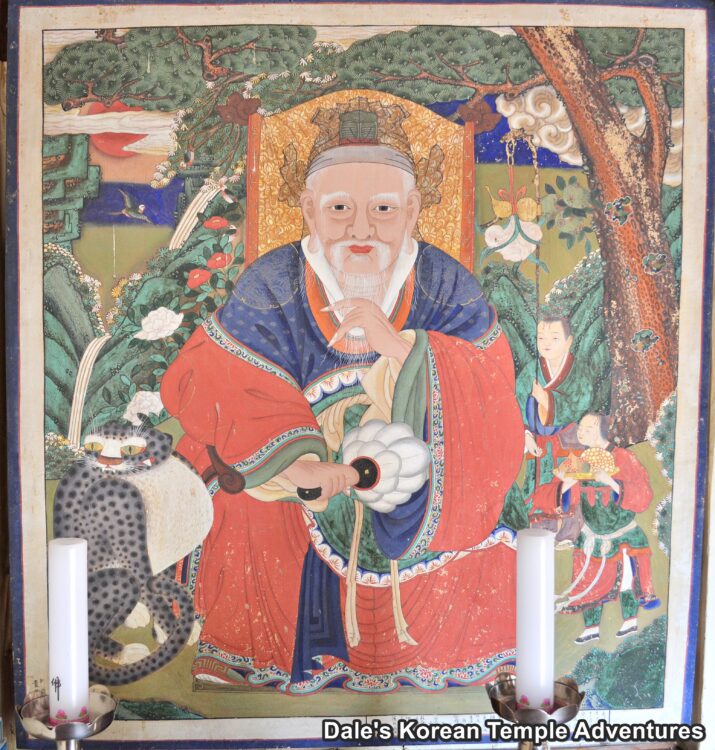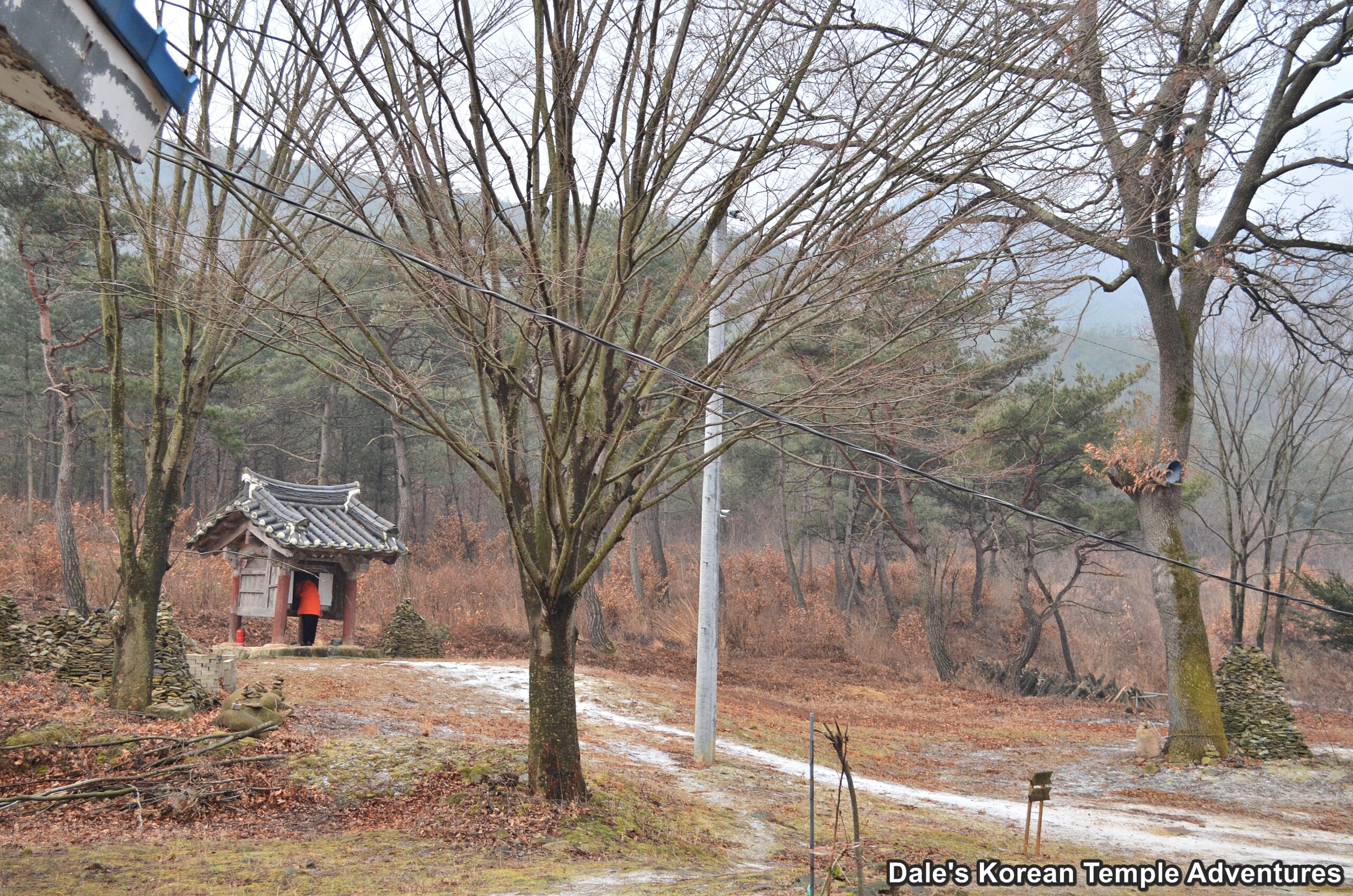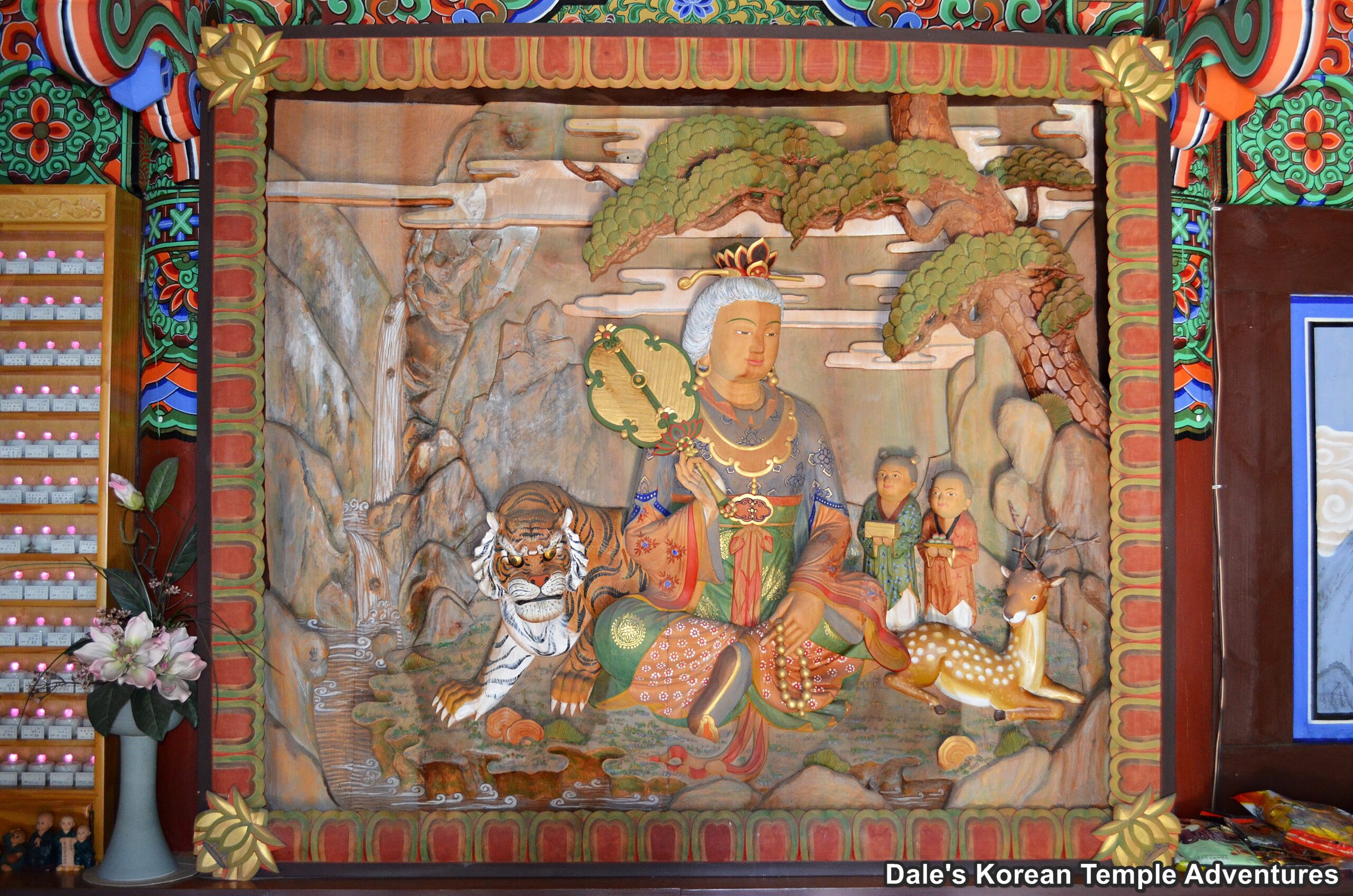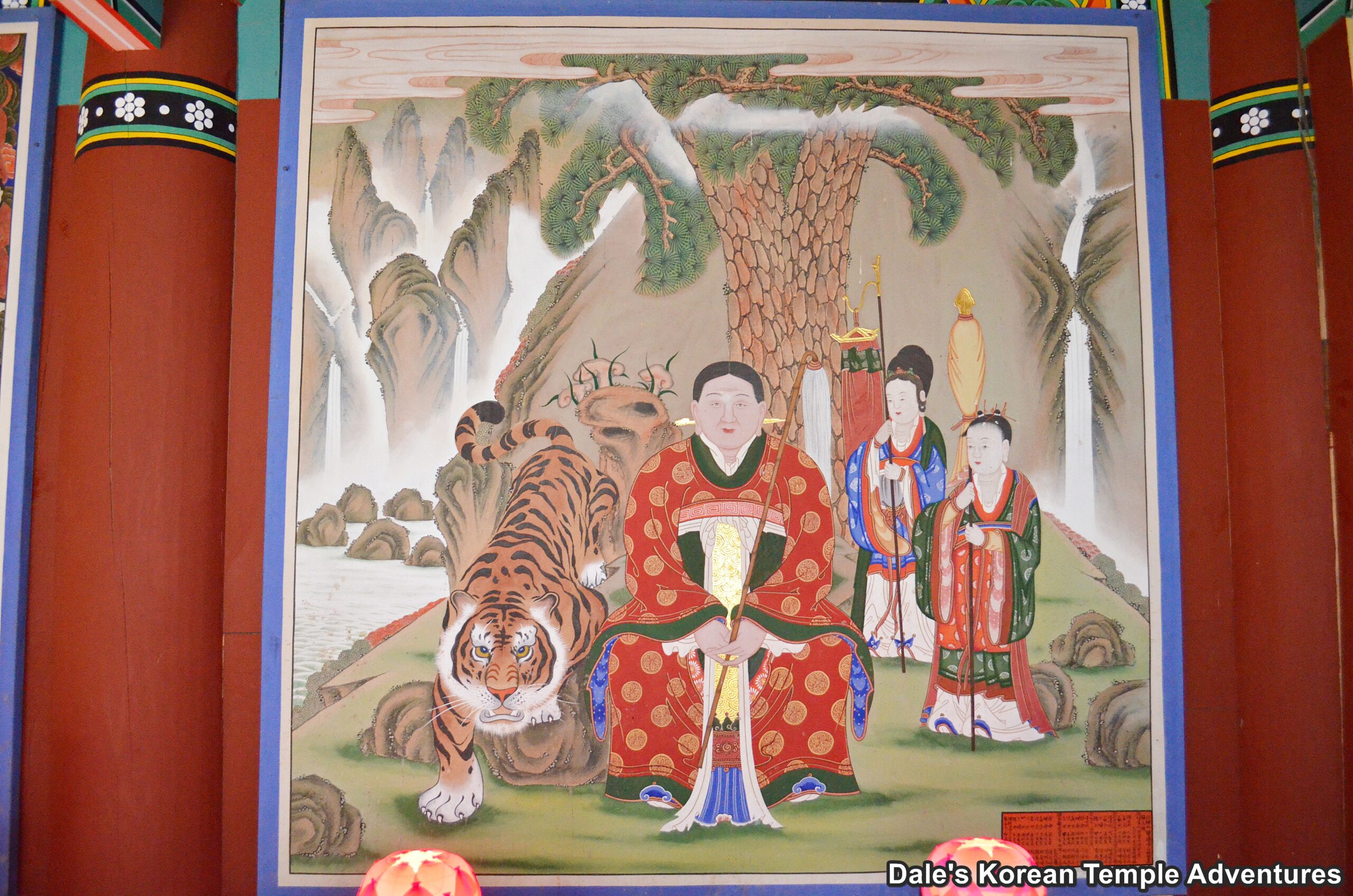
Hello Again Everyone!!
At a Korean Buddhist temple, you will often find shaman deities. Usually, you can find these shaman deities housed inside a shaman shrine hall called a Samseong-gak Hall. Housed inside this hall are Sanshin (The Mountain Spirit), Dokseong (The Lonely Saint), Chilseong (The Seven Stars) and/or Yongwang (The Dragon King). These shaman deities are also sometimes housed in their own shaman shrine halls like a Sanshin-gak, a Dokseong-gak, a Chilseong-gak, or a Yongwang-dang. Or there can be a combination with two shaman deities housed in the same shrine hall like inside a Sanshin/Dokseong-gak.
The first of these shaman deities I’ll be talking about is Sanshin, or “The Mountain Spirit,” in English. Mountains are worshiped all throughout Northern Asia like in China, Japan, and Korea. According to these North Asian peoples, the reason that mountains are worshiped as venerated objects is that they symbolize a central axis to the world. What this means is that a mountain is believed to be a place that connects heaven and earth. And with the Korean landscape being over seventy percent mountainous, it makes sense as to why Koreans, both historically and presently, worship their mountains.

Historically, Koreans prayed to mountains and Sanshin for good weather, a bountiful harvest, good health, and good fortune. When Buddhism finally did enter the Korean peninsula in the 4th century, Buddhism showed deference to the shaman deities that were figures of original worship throughout the Korean peninsula. Shamanic beliefs were absorbed not only out of respect, but they also did this to curry favour from the locals that continued to worship shaman deities like Sanshin.
In Korea, there are literally thousands of different images and incarnations of Sanshin; however, with that being said, Sanshin does tend to exhibit very specific characteristics that are common to most Sanshin images. Usually, Sanshin is depicted as a seated figure. Just as typically, he’s an old man with long flowing white hair. His white hair is matched by a flowing white beard. And even though he’s old, he still looks strong and healthy. In a painting, he’s situated in a pastoral setting that is perfect for meditation. Typically, he’s joined by any number of attendants known as dongja. The clothes that he wears are regal-looking. Almost always, Sanshin will hold something in either one or both of his hands like a fan or a walking stick which symbolizes health, longevity, virility, or spiritual attainment. But perhaps the easiest way to identify this shaman deity is that Sanshin is almost always joined by at least one tiger. Just like Sanshin is the king of the mountain, so too is the tiger the king of the mountain animals. And the tiger acts as Sanshin’s enforcer.


Predominantly, Sanshin appears as a male, but this wasn’t always the case. It wasn’t until the Confucian-dominated Joseon Dynasty (1392-1910) that this took place. Previously, it was very common for Sanshin to be female like at Ssanggyesa Temple in Hadong, Gyeongsangnam-do and Nojeonam Hermitage in Yangsan, Gyeongsangnam-do.

Far less common is to see a combination of a female and male Sanshin together like at Beopjusa Temple and Ilbungsa Temple. But perhaps the most unique Sanshin is at Hongjeam Hermitage on the Haeinsa Temple grounds in Hapcheon, Gyeongsangnam-do. Sanshin appears as a Bodhisattva, which further blurs the boundaries between Buddhism and shamanism, and it also elevates Sanshin as an enlightened being from which a devotee can learn from like Gwanseeum-bosal (The Bodhisattva of Compassion) or Munsu-bosal (The Bodhisattva of Wisdom), and not just as a symbol of health or longevity in the traditional sense of the symbolic shaman meaning of Sanshin.



Recent comments